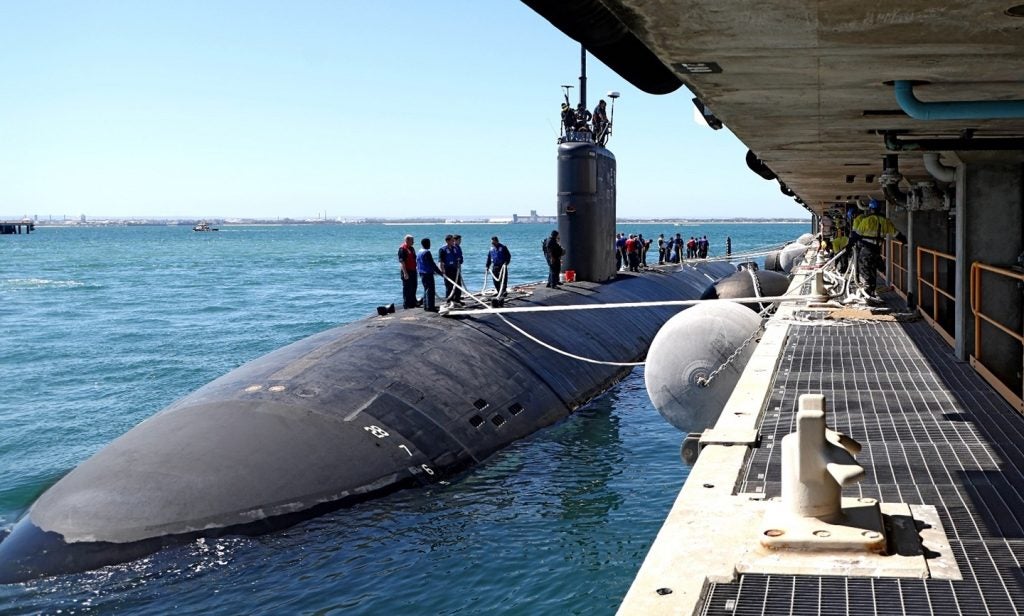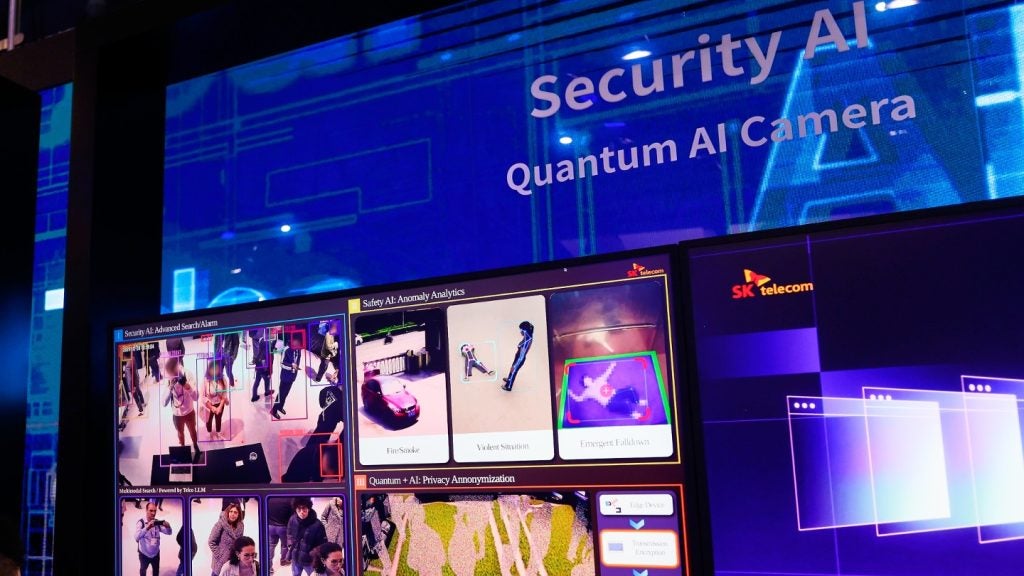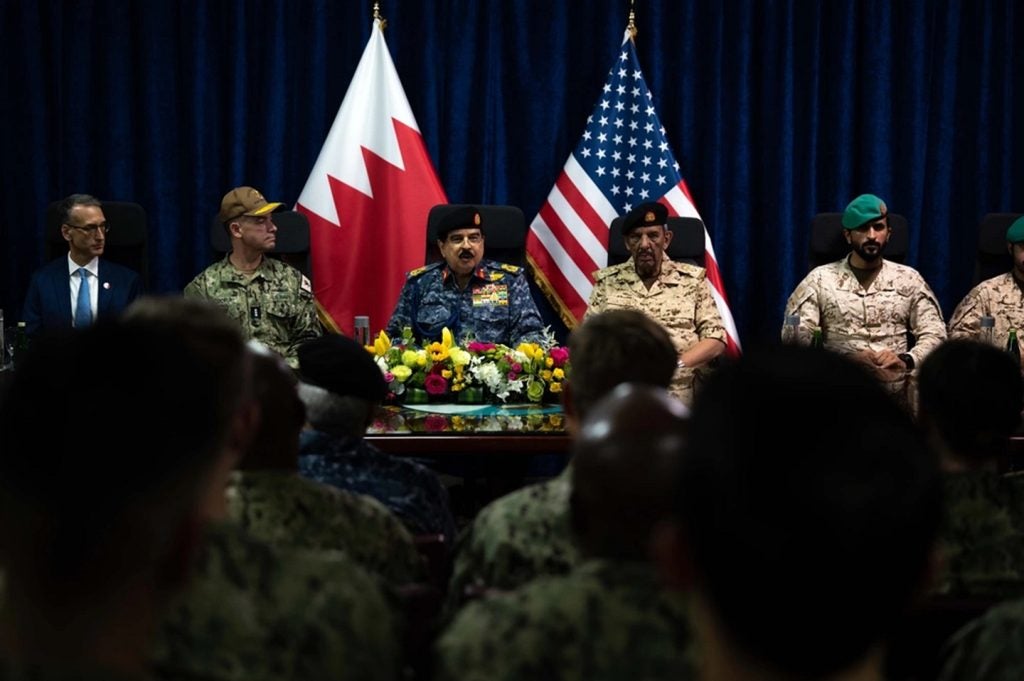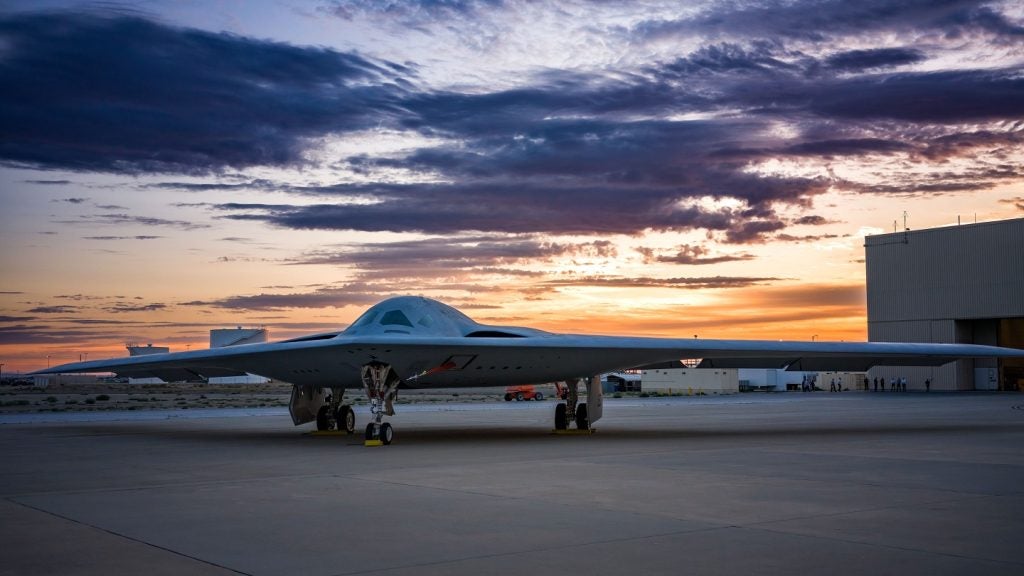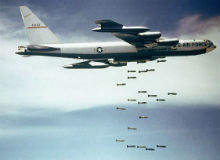

While most air forces today have abandoned their long-range strategic bombers, the US is one of the few countries in the world that still retains a significant fleet. Despite its age, it is a highly capable force made up of 76 B-52Hs, 63 supersonic B-1Bs and 20 bat-winged B-2 stealth bombers. Out of those 159 aircraft, 96 can be deployed at a moment’s notice anywhere in the world.
"Our bomber force is unique in that it rapidly brings conventional and nuclear force to bear globally, within hours," US Air Force Major Eric Badger tells Airforce-Technology. "Bombers defend our national interests by deterring or, should deterrence fail, defeating an adversary."
"Deployed or generated bombers present a clear and visible signal to adversaries and our friends and allies. Additionally our bomber force is recallable and survivable," he adds.
The airborne leg of the US’s ‘nuclear triad’
Last year, two B-2 stealth bombers flew a round trip from Whiteman Air Force Base, Missouri, to the Korean Peninsula to drop dummy 2,000lb bombs on the Jik Do Range. Officially, the sortie was part of the bilateral Foal Eagle training exercise; in truth it was a signal to North Korea’s authoritarian leader Kim Jong-un that the US was "steadfast" in its alliance commitment to defend South Korea.
See Also:
The Ukraine crisis and recent tensions with Russia have also seen a number of B-52s and B-2 bombers arrive in the UK for training exercises. For the US, the deployment of bomber aircraft is a visible reminder of its commitment to allies around the globe in what former Secretary of State Hilary Clinton called "forward-deployed" diplomacy.
How well do you really know your competitors?
Access the most comprehensive Company Profiles on the market, powered by GlobalData. Save hours of research. Gain competitive edge.

Thank you!
Your download email will arrive shortly
Not ready to buy yet? Download a free sample
We are confident about the unique quality of our Company Profiles. However, we want you to make the most beneficial decision for your business, so we offer a free sample that you can download by submitting the below form
By GlobalDataThe B-52 and B-2 bomber – but not the B-1B – still retain the capability to conduct nuclear strikes, making the US one of only a handful of countries which has a ‘nuclear triad’ made up of nuclear-capable bombers, land-based intercontinental ballistic missiles and sea-based ballistic missiles.
A growing number of industry experts are beginning to question the F-35’s stealth performance.
Countries such as Russia and China are finding ways to blunt the lethal capabilities of strategic bombers by investing in high-tech anti-access/area denial (A2/AD) weapons and capabilities. This is slowly increasing the risk for US bomber crews who fly beyond enemy lines and could potentially compromise overall mission success.
"Modernising and sustaining the bomber force is a high priority for the US," says Major Badger. "As the threat evolves, we are making the changes and investments to deal with [the A2/AD threat]. This includes modernisation programmes and upgrades….as well as developing new tactics and new weapons, which together will ensure the viability and credibility of the airborne leg of the triad."
B-2 bomber – not immune to obsolescence
Even the US Air Force’s youngest – and most advanced – bomber, the B-2, will require extensive work to remain a relevant platform for the future. The 20-strong B-2 fleet, which recently celebrated its 25th birthday, remains the only US bomber which can penetrate advanced air defences using its radar-evading technology. Until it is replaced in the next decade, maintaining the viability of the B-2 is one of the biggest priorities for the US Air Force.
To this end, the Pentagon awarded a massive $9.9bn contract to Northrop Grumman to support modernisation and sustainment efforts on the stealth bomber fleet. The twenty aircraft are expected to fly for another 40 years with retirement planned for 2058.
To future-proof the B-2, the air force is investing in the Defensive Management System-Modernization (DMS-M) upgrade which provides the B-2 aircrew with improved threat awareness and survivability. The DMS-
M will replace current systems with modernised and sustainable systems capable of addressing modern threats, says Major Badger.
The bombers – which cost $2.2bn each – will be fitted with a newer Advanced Extremely High Frequency (AEHF) satellite communications (SATCOM) system. Crews will also be able to use a very low frequency receiver, which ensures the B-2 bomber can receive secure communications even after the detonation of a nuclear bomb.
The stealth bombers will be able to carry the Massive Ordnance Penetrator, a 30,000lb "bunker buster" bomb designed to penetrate targets buried deep underground.
While no longer nuclear-capable, the B-1B Lancers will also be receiving a number of key technological upgrades which will keep them flying until the 2030s. B-1B crew will benefit from the Vertical Situation Display Upgrade (VSDU) which replaces the cockpit’s "steam gauge" instruments with newer colour displays. Data links, radar and inertial navigation systems will also be improved or replaced.
B-52 – New technologies to meet future mission requirements
The iconic B-52 Stratofortress, which first saw operational service during the Vietnam War, is expected to continue flying until the 2040s. The vintage bombers lack any stealth or supersonic capabilities and are the most vulnerable bomber when it comes to modern air defence systems. But unlike their missions over Vietnam, B-52s are being upgraded to drop smart bombs well outside heavily defended airspace.
New communications kit, avionics and a modified bomb bay to carry 21st century smart weapons are in the works. B-52 modernisation upgrades will cost $916m across the Future Year Defense Program (FYDP) which covers FY2015 to FY2019. This investment means the B-52 will continue to serve as the US’s premier stand-off weapon delivery platform, until it is replaced by a new bomber.
In May, the first B-52 upgraded with Boeing’s Combat Network Communications Technology (CONECT) was delivered to Barksdale Air Force Base, Louisiana. CONECT will enable the B-52 to integrate into complex future battlespaces by adding several communication data links, full-colour LCD displays with real-time intelligence feeds and the ability to retarget a weapon or mission parameters in flight.
According to the US Air Force, CONECT upgrades on all 76 B-52s will be complete by 2020.
A new generation of experimental stealth Unmanned Combat Air Vehicle (UCAV) is under development .
Internal weapons bay modifications will improve the B-52s flexibility and increase capacity for deadlier GPS-enabled weapons. These include ‘J-series’ weapons such as Joint Direct Attack Munitions (JDAM), Lockheed Martin‘s Joint Air-to-Surface Standoff Missile (JASSM), JASSM-ER (extended range) and Raytheon’s Miniature Air Launched Decoy (MALD) weapons.
Integrating JDAMs will be complete in 2017, while JASSM and MALD integration is planned for 2020.
"In effect, the air force’s way of dealing with A2/AD is to use munitions launched from outside of the A2/AD boundary and with limited penetration of the forward edge of the battle area," explains Wayne Plucker, aerospace and defence director at California-based consultancy Frost & Sullivan.
Under the New START treaty signed by Russia and US in 2010, around 30 B-52 aircraft will be converted to a conventional role platform with all equipment associated with nuclear missions removed. Forty B-52s retain a nuclear strike capability along with all B-2 bombers.
LRS-B – the US Air Force’s next-generation bomber
The B-1B and the B-52 bombers are expected to be phased out with the introduction of a new stealth bomber fleet in the 2020s. The US Air Force issued its request for proposals in July for the Long Range Strike Bomber (LRS-B), with Northrop Grumman and a Boeing/Lockheed Martin team thought to be in contention.
"The next-gen bomber is absolutely essential to the future of US power projection," said Paul Scharre, a fellow at the Center for a New American Security. "A foundation for credible deterrence is the ability to strike someone, and the [LRS-B] will sustain that capability for the future."
Over 100 LRS-B aircraft could eventually be bought with a price tag of $550m each. With the original B-2 stealth bomber programme beset by cost overruns and the current F-35 Joint Strike Fighter experiencing substantial delays and cost increases, that might seem a little ambitious. According to military author David Axe, bombers are traditionally a "poster child for Pentagon waste".
For some, upgrading the air force’s current bomber fleet is one way of protecting US capabilities in case the LRS-B is delayed or possibly cancelled. The US Air Force cannot begin retiring aircraft if there is no definite replacement as this would compromise one part of the US’s deterrence mission.
"Any replacement will be ten to as many as 15 years in the future. The Air Force needs an interim solution," says Frost & Sullivan’s Plucker. "Delays are always a reality on large programme as are funding shortages. The legacy systems can soldier on for additional years."
In recent years, the US Air Force’s bomber fleet has proven itself in a number of warzones including Iraq, Afghanistan and the intervention in Libya. As shown with the 2013 mission to Korea, US bombers continue to be a valuable deterrence asset as well. Commanders will hope that upgrades to the B-1B, B-2 and B-52 will continue their combat effectiveness and deterrence capabilities for years to come.
Follow Grant Turnbull on Google+


.gif)

